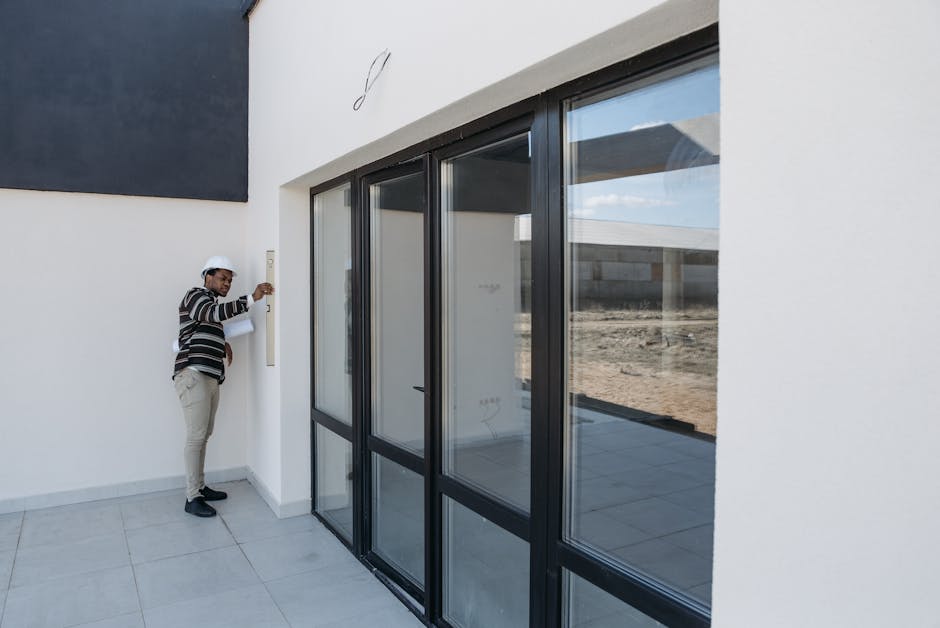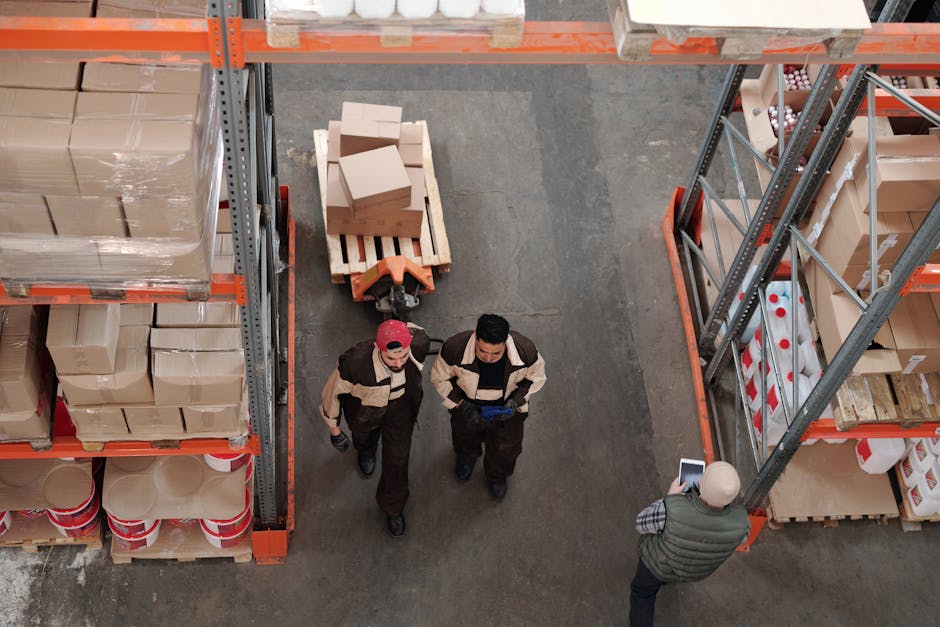Revolutionizing Industries: How Drones Are Transforming Modern Workplaces
“Drone technology has evolved from recreational gadgets to powerful business tools that are transforming workplace operations across multiple industries. This article explores how drones are revolutionizing workplace management, enhancing safety protocols, streamlining operations, and creating new opportunities for innovation and efficiency in modern business environments. ”

Revolutionizing Industries: How Drones Are Transforming Modern Workplaces
In today's rapidly evolving technological landscape, drones have transcended their origins as recreational gadgets to become powerful tools transforming workplace operations across numerous industries. These unmanned aerial vehicles are revolutionizing how organizations approach everything from facility management to security, creating unprecedented opportunities for efficiency, safety, and innovation.

The Evolution of Drone Technology in Professional Settings
Drone technology has matured significantly in recent years, with advancements in camera quality, flight duration, obstacle avoidance, and artificial intelligence capabilities. Modern commercial drones like the DJI Mavic 3 feature sophisticated dual-camera systems, extended flight times approaching 30 minutes, and intelligent flight modes that make them increasingly valuable for business applications.
What makes today's drones particularly suited for workplace applications is their combination of mobility, data collection capabilities, and increasingly autonomous operation. The integration of machine learning algorithms has enhanced their ability to navigate complex environments, recognize objects, and make real-time decisions without constant human guidance.
Transforming Facility Management and Real Estate
Aerial Inspections and Maintenance
For facility managers and real estate professionals, drones offer a revolutionary approach to building inspections and maintenance. Rather than deploying personnel on dangerous lifts or scaffolding, drones can:
- Conduct comprehensive roof inspections to identify damage or deterioration
- Examine building exteriors for structural issues, water intrusion, or facade damage
- Perform thermal imaging to detect energy loss, insulation problems, or electrical hotspots
This approach not only improves safety by keeping personnel on the ground but also significantly reduces inspection time and costs while providing more comprehensive visual data.
Enhanced Property Marketing and Documentation
Real estate professionals are leveraging drone technology to create compelling marketing materials that showcase properties from perspectives previously unavailable. Aerial photography and videography provide potential buyers or tenants with comprehensive views of buildings, surrounding amenities, and the overall property layout.
For large corporate campuses or educational institutions, drones can create detailed aerial maps and 3D models that assist with space optimization and campus planning initiatives. These visual assets become valuable tools for facilities teams planning renovations or expansions.

Enhancing Workplace Safety and Security
Perimeter Monitoring and Surveillance
Security teams are incorporating drones into their surveillance strategies to monitor large facilities, campuses, and perimeters more effectively. Programmed flight paths allow drones to conduct regular patrols, providing live video feeds to security personnel and documenting any unusual activity or intrusions.
Unlike fixed security cameras, drones can rapidly deploy to investigate alerts or incidents, giving security teams eyes on the situation before personnel arrive. This capability is particularly valuable for large industrial facilities, warehouses, or sprawling corporate campuses where traditional security coverage may have gaps.
Emergency Response and Assessment
During workplace emergencies such as fires, chemical spills, or natural disasters, drones provide critical situational awareness without putting additional personnel at risk. They can:
- Assess damage to buildings and infrastructure
- Locate personnel who may need assistance
- Identify hazardous conditions before responders enter
- Monitor evolving situations in real-time
This information security application helps emergency management teams make better-informed decisions and coordinate more effective responses.
Streamlining Operations and Logistics
Inventory Management and Warehouse Operations
In large warehouses and distribution centers, drones equipped with barcode scanners or RFID readers are revolutionizing inventory management. These aerial assistants can:
- Conduct automated inventory counts without disrupting operations
- Locate specific items in vast storage facilities
- Verify proper placement and organization of stock
- Identify discrepancies between physical inventory and digital records
Companies implementing drone-based inventory systems report significant improvements in accuracy and efficiency, with some warehouses reducing inventory count times by up to 95%.
Construction Site Monitoring and Progress Tracking
For construction projects, drones have become indispensable tools for project management and workflow optimization. Regular aerial surveys create detailed documentation of progress, allowing project managers to:
- Compare actual construction against digital plans and models
- Identify potential issues before they become costly problems
- Document completed work for client updates and billing purposes
- Monitor material usage and placement across large sites
This aerial perspective enhances communication between stakeholders and provides valuable data for improving future project planning and execution.

Data Collection and Analysis Applications
Environmental Monitoring and Compliance
Organizations with environmental responsibilities or sustainability initiatives are using drones to monitor their impact and ensure regulatory compliance. Equipped with specialized sensors, drones can:
- Detect gas leaks or emissions from industrial facilities
- Monitor water quality in retention ponds or treatment areas
- Track vegetation health and growth on corporate campuses
- Document wildlife presence for environmental impact assessments
This data collection supports both compliance requirements and corporate sustainability goals, providing objective documentation of environmental conditions and changes over time.
Thermal Imaging and Energy Efficiency
Facility managers focused on energy efficiency are deploying drones equipped with thermal cameras to identify energy loss and optimize building performance. These thermal surveys can:
- Pinpoint areas of heat loss in building envelopes
- Identify poorly insulated sections of facilities
- Detect overheating electrical components before failure
- Verify proper function of HVAC systems and ductwork
The insights gained from these inspections help organizations prioritize maintenance and upgrades that deliver the greatest energy savings and cost reductions.
Challenges and Considerations for Workplace Implementation
Regulatory Compliance and Airspace Restrictions
Organizations implementing drone programs must navigate complex regulatory requirements from aviation authorities. In the United States, commercial drone operations fall under Federal Aviation Administration (FAA) regulations, which may require:
- Pilot certification for drone operators
- Registration of aircraft
- Adherence to airspace restrictions
- Operational limitations (altitude, visual line of sight, etc.)
Facility managers and IT departments must work together to ensure all drone operations comply with relevant regulations, which may vary significantly by location and use case.
Data Privacy and Security Concerns
The data collection capabilities that make drones valuable also raise important data privacy considerations. Organizations must establish clear policies regarding:
- What data drones will collect and retain
- How imagery and other data will be stored and secured
- Who has access to drone-collected information
- Notification procedures for areas under drone surveillance
Transparent policies and communication help address privacy concerns while maintaining the benefits of drone operations.

Future Trends in Workplace Drone Technology
Autonomous Operations and AI Integration
The future of workplace drones lies in increasing autonomy and artificial intelligence integration. Next-generation systems will feature:
- Self-charging capabilities through docking stations
- Fully autonomous patrol and inspection routines
- Advanced object recognition and anomaly detection
- Predictive maintenance based on historical imagery
These advancements will reduce the need for dedicated operators and allow drones to become more integrated into daily workplace operations.
Indoor Navigation and Miniaturization
While most current applications focus on outdoor use, advances in indoor navigation technology are opening new possibilities for workplace drones. Smaller drones equipped with collision avoidance systems can navigate inside buildings to:
- Conduct inventory in high-rack warehouses
- Inspect areas unsafe for human entry
- Monitor environmental conditions throughout facilities
- Provide security coverage in large indoor spaces
As these technologies mature, the distinction between indoor and outdoor drone applications will continue to blur, creating more comprehensive solutions.
Implementing a Successful Workplace Drone Program
Building the Right Team and Skills
Organizations looking to implement drone programs should consider the necessary skills and team structure. Successful programs typically include:
- FAA-certified drone pilots (if operating in the US)
- Data analysts who can interpret and apply drone-collected information
- IT support for data management and integration with existing systems
- Program managers who understand both aviation and business requirements
Investing in proper training and certification ensures safe, legal, and effective drone operations.
Integration with Existing Systems and Workflows
For maximum value, drone programs should integrate with existing workplace management systems. This might include:
- Connecting drone-collected imagery with facility management software
- Feeding inspection data into maintenance management systems
- Integrating security footage with existing surveillance platforms
- Incorporating drone-collected metrics into business intelligence dashboards
This integration ensures drone-collected data becomes actionable information that supports broader organizational goals and workflow optimization.
Conclusion: The Future Workplace Takes Flight
Drone technology represents one of the most significant technological advances reshaping modern workplace management. From enhancing safety and security to streamlining operations and providing unprecedented data collection capabilities, these aerial tools are creating new possibilities for efficiency and innovation across industries.
As the technology continues to mature and regulatory frameworks evolve, we can expect drones to become increasingly integrated into daily workplace operations. Organizations that thoughtfully implement drone programs with clear objectives, proper training, and attention to privacy and security considerations will gain significant competitive advantages in efficiency, cost reduction, and workplace safety.
For facility managers, IT professionals, and organizational leaders, now is the time to explore how drone technology might transform their specific workplace challenges and opportunities. The sky is no longer the limit—it's the new frontier for workplace innovation.